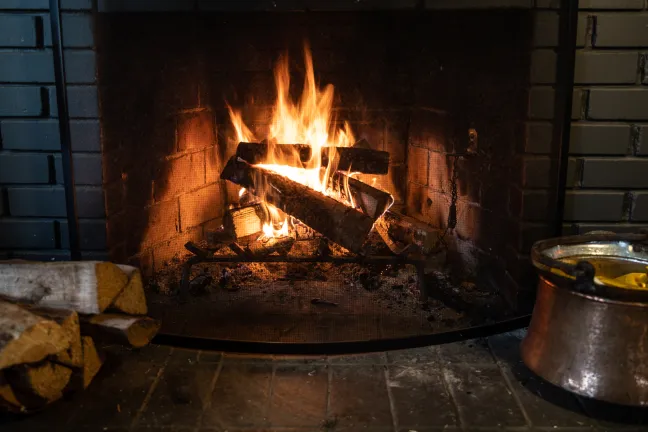Winter wood burning is a major driver of air pollution in Multnomah County, making health conditions worse and potentially leaving people more susceptible to COVID-19, health officials told the Board of County Commissioners.
At a Nov. 10 briefing, Public Health Director Jessica Guernsey and others highlighted the health risks of winter wood smoke to County residents while also sharing the impact of a 2018 ordinance designed to limit wood burning and wood smoke pollution.
Amid a global pandemic caused by a virus that targets the respiratory system, Guernsey said air pollution can exacerbate the pandemic in a community and may even put people at higher risk of COVID-19 infections by harming their overall health.
“Some scientists think air pollution also affects the transmission of COVID-19 and its ability to move and survive in the air,” Guernsey said.
In Multnomah County, particulate pollution is of specific concern and can cause additional health effects, including low birthweight and cognitive impairment.
“While our air shed meets the national standards for particulate matter, there is no safe level of exposure to particulate matter,” Guernsey said.
“When we look at the most recent data submitted by the Department of Environmental Quality for 2017, wildfires are the biggest source of particle pollution, followed by dust and wood heating. With wildfire season primarily ending in September, burning wood makes up more than half the pie in our winter months, when it is often used for heat and ambiance.”
The U.S. Census Bureau estimates that 3,500 households in Multnomah County use wood burning as their primary source of heat, with an unknown number of wood stoves and an unknown number of other wood-burning devices such as fireplaces, fire pits and chimineas.
“Wood smoke especially becomes a problem in the winter, when cold, stagnant air prevents it from rising and dispersing,” said Andrea Hamberg, interim Environmental Health Director at the Multnomah County Health Department.
“As wood burning increases during these cold periods, the pollutants from the smoke are trapped near the ground. Depending on chimney heights and location of houses, particularly in dense neighborhoods, particulate matter and other air toxics from wood burning devices can be released at low heights and result in relatively high levels of exposure.”
In response to the health risk of wood smoke exposure, County officials adopted an ordinance limiting non-essential wood burning on poor air quality days from Oct. 1 to March 1. Air quality is updated daily on the Multnomah County Wood Smoke Status website.
Enforcement is based on complaints, and violators are notified in writing after initial offenses and offered educational outreach. Fines are issued on someone’s third offense. Since 2018, 10 violation letters have been issued, all of which have been first offenses.
Additionally, since the ordinance has been in effect, an estimated 130,000 County residents have been reached through various media. According to an end-of-year survey sent to community members subscribed to County emails during the 2019-20 season, 75 percent of respondents reported burning less after learning about the ordinance.
“This tells us that the ordinance works when community members know about it,” said Multnomah County Environmental Toxics Senior Program Specialist Nadège Dubuisson.
Going forward, Multnomah County plans to increase outreach so even more residents are aware of both the ordinance and the threat of winter wood smoke. Recently, Multnomah County’s Office of Sustainability received $25,000 from the Department of Environmental Quality to bolster education and outreach efforts for the 2020-21 winter season.
Hamberg says the thing she is most proud of regarding the efforts to minimize the effects of winter wood smoke is that community members change their behavior after learning about the ordinance.
“People from the County want to be good neighbors and ensure everyone has clean air to breathe, and I’m really appreciative of that,” Hamberg says.
“It’s why I’m particularly pleased about the partnership with the Office of Sustainability and the excellent outreach work they’ve been doing.”

